
As people begin to age, many start to wonder is their age-related brain dysfunction inevitable? Fortunately not according to scientific literature and my professional experience. Reports from The Centers for Disease Control and Prevention (CDC) status reports “that up to 40% of dementia cases could be prevented or delayed and that Alzheimer’s disease and related dementias are not an inevitable part of the aging process.” In spite of that the “ World Health Organization (WHO) reports that more than 55 million people are presently living with dementia worldwide with nearly 10 million new cases diagnosed each year.” Regrettably, the WHO expects numbers to grow to 78 million by the year 2030.
The good news is research demonstrates that there are brain/body processes that can be influenced to help maintain and enhance brain function, all the while warding off age-related brain dysfunction, also referred to as dementia. 1
Some of these processes are epigenetically managed, which makes them inherently adaptable. 2,3 Research supports that natural elements, such as polyphenols and long chained fatty acids in conjunction with medium chained fats are actively preventing or reversing the epigenetic changes involved in aging and neurodegeneration. 4 There is however a great number of suggestions to draw from, some of which are mentioned further into this piece.
Medically, dementia is an umbrella term used to describe memory loss, deteriorating executive functions and communication is compromised, brought about by the progressive, gradual cognitive decline, in addition to other cognitive deficits that typically occur with the aging process. 5
Status reports, according to WHO, announce that Alzheimer’s disease has ranked 60-70% of dementia cases showing it to be the most common form of age-related brain dysfunction.
Conventional medicine (allopathic) uses pharmaceutical interventions to treat dementia, whereas integrative and holistic medicine employs a comprehensive approach to target and influence key underlying brain/body functions and systems that address the underlying root causes of age induced brain dysfunction. 6
Brain Shrinkage: Is it Normal as We Age?
Even though brain shrinkage is claimed to be inevitable, it does not imply that this common occurrence cannot be fended off and that the brain mass cannot be restored. Given many people’s current health status, the following outcomes are described. “The brain’s overall size begins to shrink when you’re in your 30s or 40s, and the rate of shrinkage increases once you reach age 60. Brain shrinkage doesn’t happen to all areas of the brain at once. Some areas shrink more and faster than others, and brain shrinkage is likely to get more severe as you get older. 7
Why do brain cells decrease?
From a root cause and holistic approach, brain cells primarily decrease due to a lack of proper nourishment; specifically outlined by the elements used in various brain regions and cognitive processes. Medications cannot and do not have the ability to replace whole natural nutrients. Clinically the following description describes why brain cells decrease: “It can be a result of many different diseases that damage the brain, including stroke and Alzheimer’s disease. As you age, you naturally lose some brain cells, but this is a slow process. Brain atrophy associated with disease or injury occurs more quickly and is more damaging.” 8
What are the Warning Signs of Dementia?
The Centers for Disease Control and Prevention CDC has identified the following warning signs: 9
• Memory loss that disrupts daily life.
• Challenges in planning or solving problems.
• Difficulty completing familiar tasks at home, work, or leisure.
• Confusion with time and place.
• Trouble understanding visual images and spatial relations.
• New problems with words in speaking or writing.
• Misplacing things and losing the ability to retrace steps.
• Decreased or poor judgment.
Attention to the Root Causes Brain Dysfunction
The brain is extremely complex with approximately 100 billion neurons and 10 times that number of glial cells unified via trillions of complex synaptic networks continuously firing from the instant the brain begins to develop in the third week of gestation onward into our elder years.10
Due to the very nature of the brains complexity renders the reason why the current pharmaceutical options have not been effective in prohibiting the progressive path of dementia.11
Maintaining the health and protection of these billions of brain cells requires a wide-ranging approach that addresses some of the key underlying factors implicated in the onset of dementia. As cognition declines (dementia), widespread damage occurs as neurons cease to function, losing their link to other neurons … eventually dying.
Besides poor lifestyle and dietary habits and a lack of key nutrients, research shows that there is a direct connection between cellular oxidative stress, amplified neuroinflammation, and age-related cognitive debility.
Neuroinflammation
Inflammation is a protective body response to pain, injury, irritation, or disease; all starting with your immune response, meaning inflammation follows our immune response to something it determines to be unhealthy or a problem. On the other hand, neuroinflammation is the central nervous system’s endeavor to protect the brain. Then again, as with other parts of the body, when the inflammatory response in the brain becomes chronic, it can have very harmful brain effects and could eventually lead to neurological disorders.12
A key instigator of neurodegeneration is oxidative stress in the central nervous system in the form of reactive oxygen species (ROS) and reactive nitrogen species (RNS).These are byproducts of normal energy production within cells. 13
Antioxidants play a prominent role in neurodegenerative disorders, involving ROS/RNS accumulation. A lack of brain tissue defense supplied by antioxidants results in an increased risk of brain tissue damage and other age related brain dysfunction.13
Through research, we now know that there is a direct link between cellular oxidative stress and increased neuroinflammation, in relation to age related cognitive deficit.14 Another disruption lies with the microglial cells in the brain. They may fail in their job to clear away cellular debris in the brain. If a lack of function occurs with this process, it can lead to increased neuroinflammation causing neuronal death and brain shrinkage. Brain shrinkage is highly associated with Alzheimer’s disease not only age related brain disorders. 15
Chronic Brain Inflammation
Characteristic signs of various forms of dementia including Alzheimer’s occur when there is a heightened sustained inflammatory brain response that ultimately intensifies amyloid protein build-up and tau accumulation. As brain inflammation continues to build to the chronic stage, given the intricacy and inter-relationship of the cells and pathways, actually helps fuel a sustained chronic immune response. Overall, keep in mind that two main contributing factors are amyloid protein build-up and neurofibrillary tau tangles, a noted cause of Alzheimer’s disease. 16
It has become evident through research that amyloid protein buildup is not the single cause of Alzheimer’s disease or the keynote in dementia, but only one contributing factor.17
Lifestyle Recommendations
The 2020 Lancet Commission report outlines a dementia prevention, intervention and care, identifying 7 steps to help reduce the risk of dementia:
➊ Quit smoking
➋ Maintain healthy blood pressure levels
➌ Be physically active
➍ Maintain a healthy weight
➎ Get enough sleep
➏ Stay engaged
➐ Manage blood sugar levels
Another consideration is what research refers to as the gut-brain axis. This describes interconnectedness between the central nervous system and gut microbiome. Research based studies are showing that mechanisms of the gut microbiome can contribute to neuroinflammation, neurodegeneration, and even Alzheimer’s disease.18 An area to consider in an optimum plan to protect and enhance cognition function throughout the aging process.
What is Amyloid beta Protein?
Amyloid beta (Aβ or Abeta) is comprised of peptides, “ 36–43 amino acids that are the main component of the amyloid plaques found in the brains of people with Alzheimer’s disease.” 19
What is the function of beta-amyloid protein?
The amyloid-beta precursor protein is an important component with a key role to play. It is considered a large membrane protein. Amyloid-beta normally plays an essential role in neural growth and repair. Conversely, later in life, it can develop into a corrupted form which can destroy nerve cells, leading to the loss of thought processes and memory noted in Alzheimer’s disease. 20
We are looking at a predominant amyloid plaque presence in the cases of dementia, in particular the area of the brain where learning and memory occur – in the hippocampus.21
What foods cause beta-amyloid?
Diets high in bad fats that produce LDL cholesterol could speed up the formation of beta-amyloid plaques in the brain. Additionally, low in good fats that produce HDL cholesterol, the brains preferred fat along with ketones that are derived from coconut; medium chained triglycerides (MCT oil) These sticky protein clusters are blamed for much of the damage that occurs in the brains of people with Alzheimer’s. 22
*Read why ketones are the brains preferred food source below.
In the healthy brain, microglial cells release proteolytic enzymes (Proteolytic enzymes are protein eating enzymes such as Proteinase and Serrapeptase) induce phagocytosis (the ingestion of bacteria or other material by phagocytes and amoeboid protozoans) to clear beta-amyloid peptides. However in the case of dementia, the microglial cells release immune proinflammatory cytokines that incites an ongoing inflammatory outpouring that supports beta-amyloid and tau protein accumulation in the end creating harmful neurofibrillary tangles.23
About Tau Protein
Tau protein is an important stabilizer present in tubular structures, like microtubules in neurons. Think of tau as part of the cell’s supporting structure, also referred to as a cytoskeleton.2 In healthy brain neurons, the tau protein acts as a supportive structure inside the nerve cells. But in Alzheimer’s disease, the tau protein transforms and malfunctions, losing its ability to hold the cells together. 24
To understand the formation of tau, we must first understand the hyperphosphorylation of tau. Hyperphosphorylation is a process used to regulate cell mitosis. When this signaling mechanism fails, excessive or abnormal phosphorylation of tau results in the malformation of normal tau proteins into filaments and tangles. Our focus will be on the prevention and clearing of tau aggregation by means of biologically sourced therapeutics, including anti-amyloid agents.
Faulty hyperphosphorylation can produce an abnormal build-up of tau within the cells. Moreover, insoluble tangles are strongly associated with Alzheimer’s disease, although the transformation of soluble tau is more damaging to nerve tissue (neurotoxic) and is showing to be responsible for the cognitive dysfunction of Alzheimer’s patients.
Neurofibrillary tau tangles
When amyloid proteins continue to increase, there is a prompt spread of tau throughout the brain. Unhealthy levels of tau accumulation in the brain forms densely twisted tangles inside the neurons.16 Hyperphosphorylated tau contributes to the inflammatory onslaught in the brain.23
The interrelationship in combination with neuroinflammation, beta-amyloid build-up, and augmented tau tangles is hazardous to brain health. To address these underlying imbalances, specific brain health promoting nutrients can be employed in conjunction with a healthy diet and lifestyle regime.
Are Ketones the Brain’s Preferred Food?
Studies, including PET (positron emission tomography) and arterio-venous difference trials, have revealed that brain glucose consumption decreases in the presence of elevated levels of ketones.25
The study group reached the conclusion that the brain’s preferred food is ketones. They observed the ketones entering the brain in relation to their plasma concentration regardless of glucose concentration. In other words, even when glucose was available, absorption decreases in the presence of ketones. Overall, glucose is the brain’s dominant fuel—but not necessarily the brain’s preferred one.
Ketones are Essential for Brain Development and Maintenance
Ketones are the brain’s back-up fuel, and not just during times of aging and insulin resistance. If the body has been thrown into starvation mode due to malnutrition or an extremely low caloric diet, ketones become the body’s only energy option. All other organs in the body, with the exception of the brain, can call upon free fatty acids to replace declining glucose levels—they do not need to rely on ketones. In this way, ketones are reserved solely for use by the brain, as necessary.26, 27
Reducing Tau Through Natural Sources
In the search for tau-reducing agents and therapies, a number of natural products and sources have been compiled and summarized in medical literature.28,29 Because clinical studies indicate that tau-based treatment plans appear to be more effective than anti-Aβ therapies for the treatment of Alzheimer’s patients, a push has recently been made to examine dietary agents that reduce tau and other natural sources for their beneficial effects in Alzheimer’s treatment protocols. These products include land and marine plants, as well as microorganisms, invertebrates and algae, some of which have drug development potential. Some examples are summarized below.
These natural compounds have shown to be potential agents in the treatment of Alzheimer’s disease and several other dementia types, by way of their anti-tau constituents and their modulation of tau protein.
Turmeric (Curcuma longa)
Polyphenols are naturally tau reducing. Curcumin is one such phenol which has been shown to significantly increase the production of the anti-inflammatory cytokine IL-4, in addition to decreasing tau and Aβ levels. Curcumin is widely available today in supplement form. Choose a product that indicates increased absorbability.30
Bayberry Root Bark (Myrica cerifera)
Several potent extracts of the shrub bayberry are noted for their tau and tau filament formation reduction and inhibition, including a number of flavonoids. Bayberry can be found in loose ground/sifted form and can be taken as a tea or in supplement capsules.31
Roselle (Hibiscus sabdariffa)
The flavonoid Gossypetin, derived from the hibiscus specie (roselle), also inhibits tau filament formation. This flavonol is isolated from the flowers and the calyx of Roselle, known for its strong antibacterial and anti-cancer properties, and is often made as a tea or a cold drink.32
Green Tea (Camellia sinensis)
The strong antioxidant extracts of green tea inhibit biofilm formation. The main polyphenol element of green tea has several antibacterial properties, as well as powerful antioxidant action. Drink high quality green tea for these many benefits or take EGCG as a supplement.33
Cinnamon (Cinnamonium zeylanicum)
Cinnamon possesses two compounds contributing to its human tau inhibitory actions (cinnamaldehyde and catechins/epicatechin). Cinnamon has already made its mark as a glucose-lowering agent; now, we see it offers other great benefits. For sugar regulation, cinnamon is often taken as a supplement; the same can be done for inhibiting tau formation. You can also make liberal use of it in food and drink.34
Grape Seed (Vitis vinifera)
Similar to the polyphenolic extracts in cinnamon, grape seed extracts have been shown to prevent tau fibrillization-forming neurotoxic clusters (intracellular formations of misfolded protein). For some time now, people have availed themselves of the protective qualities of grape seed extract for its benefits towards varicose veins, diabetic complications, poor circulation and swelling reduction, while its high anti-oxidants protect cells from damage and disease. Purchase as a supplement.35
Sage (Salvia offinalis)
Sage’s active ingredient (polyphenol rosmarinic acid) has shown results in improving memory and brain cognition. Sage also reduces tau hyperphosphorylation in addition to diminishing several Alzheimer’s intermediaries, such as lowering Aβ accumulation and reactive oxygen species and inhibiting lipid peroxidation and DNA fragmentation.
Sage extract is very effective for reducing the breakdown of acetylcholine—a main component for memory). Sage tea is wonderful; you can also use sage in meal preparation, and it can be purchased as a tincture or supplement for therapeutic treatment.36
Other Plant-Derived Tau Lowering Properties
The following group of plants display various plant properties shown to influence β-amyloid and tau protein, as well as possess other protective qualities. Some of these will be familiar, while other therapeutic agents may not be as readily accessible.
Red Sage (Salvia miltiorrhiza)
Red sage contains a protective agent called norditerpene shown to be effective against neurotoxicity and the tau hyperphosphorylation generated by β-amyloid protein.37
Chinese Yew (Taxus yunnanensis)
Lignans and several other compounds were studied from the Chinese yew, three of which were functional brain proteins. The results showed that the plant’s lignans are effective activators of glycogen synthase kinase 3 (GSK-3)* and the phosphorylation of their binding basic proteins and an effective inhibitor of acidic protein (rCRMP-2). As a side note, Paclitaxel (from the Pacific yew) is a neurodegenerative drug used to disrupt the loss of function induced by tau pathology.
*Glycogen synthase kinase 3 (GSK-3) is a ubiquitously expressed and evolutionarily preserved protein serine/threonine kinase and is involved in multiple biological processes.38
Olive oil (Oleaeuropaea)
Oleaeuropaea, from the common olive tree, tested positive for inhibiting filament and tau formation.39
Rhubarb (Rheum palmatum)
Anthraquinones, isolated from the root and rhizome of rhubarb, inhibit tau aggregation and dissolve Alzheimer’s paired helical filaments.40
Coconut (Cocos nucifera)
The juice of young coconuts decreased levels of tau in research studies. It was seen as a potential therapeutic method that could significantly reduce certain pathologies attributed to Alzheimer’s disease.41
Panax Ginseng
Not surprisingly, Asian ginseng reduces neurotoxicity and tau hyperphosphorylation by enhancing the activities of protein phosphatase 2 (PP-2) involved in cell growth.42
Garlic (Allium sativum)
Several constituents of garlic consisting of sulfur, water and lipid soluble components, exhibit anti-inflammatory, anti-amyloid and anti-tangle effects.43
Microbe and Marine Organisms Inhibiting Tau Formation
Studies involving microbe action (fungi and bacteria) in fulvic and humic acids were found to inhibit tau filaments and formation.44 Other aquatic marine life showed further tau reducing capabilities such as a reduction of tau hyperphosphorylation seen with sea snails and sponges.45,46
Ashwagandha (Withania somnifera)
Research made evident that ashwagandha has neuroprotective capability. It showed the potential of beta-amyloid plaque aggregation reduction and tau protein accumulation in both vitro and vivo research studies. All the while inhibiting oxidative and inflammatory damage and regulating heat shock protein regulation. 19 Additionally Ashwagandha displayed cognitive enhancement during a 2020 methodical review randomized, placebo controlled double blind human trials.47,48
*In vivo refers to when research or work is done with or within an entire, living organism. … In vitro is used to describe work that’s performed outside of a living organism. This can include studying cells in culture or methods of testing the antibiotic sensitivity of bacteria.49
Boost your memory by eating right – Harvard Health
Check out my recent book for full details on how to reverse and prevent Alzheimer’s and many types of Dementia. “Reverse Alzheimer’s Disease Naturally”
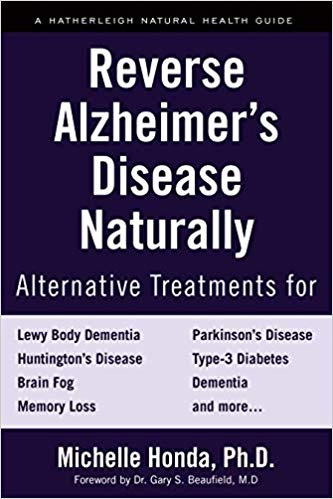
References
1 Qui C, Fratiglioni L. Aging without dementia is achievable: current evidence from epidemiological research. J Alzheimers Dis. 2018;62(3):933-942.
2 Liu X, Jiao B, Shen L. The epigenetics of Alzheimer’s disease: factors and therapeutic implications. Front Genet. 2018;9:579.
3 Pal S, Tyler JK. Epigenetics and aging. Science Advances. 2016;2(7).
4 Arora I, Sharma M, Sun LY, Tollefsbol TO. The epigenetic link between polyphenols, aging and age-related disease. Genes. 2020;11(1094).
5 Duong S, Patel J, Chang F. Dementia: what pharmacists need to know. Can Pharm J. 2017;150(2):118-129.
6 Source: Tewari D, Stankiewicz AM, Mocan A, et al. Ethnopharmacological approaches for dementia therapy and significance of natural products and herbal drugs. Front Aging Neurosci. 2018;10(3).
7 Mar 23, 2021. – WebMD https://www.webmd.com › Healthy Aging › Reference
8 Brain Atrophy: Symptoms, Causes, and Life Expectancy – Healthlinehttps://www.healthline.com › health › brain-atrophy
9 Livingston G, Huntley J, Sommerlad A, et al. Dementia prevention, intervention, and care: 2020 report of the Lancet Commission. Lancet.2020;396(10248):413-446.
10 Stiles J, Jernigan TL. The basics of brain development. Neuropsychol Rev.2010;20(4):327-348.
11 Tewari D, Stankiewicz AM, Mocan A, et al. Ethnopharmacological approaches for dementia therapy and significance of natural products and herbal drugs. Front Aging Neurosci. 2018;10(3).
12 Brambilla R. Neuroinflammation, the thread connecting neurological disease. Acta Neuropathologica. 2019;137:689-691.
13 Salim S. Oxidative stress and the central nervous system. J Pharmacol Exp Ther. 2017;360(1):201-205.
14 Kandlur A, Satyamoorthy K, Gangadharan G. Oxidative stress in cognitive and epigenetic aging: a retrospective glance. Front Mol Neurosci. 2020;13(41).
15 National Institutes of Health. What happens to the brain in Alzheimer’s disease? May 16, 2017.
16 Hampel H, Caraci F, Cuello AC, et al. A path toward precision medicine for neuroinflammatory mechanisms in Alzheimer’s disease. Front Immunol. 2020;11(456).
17 Kametani F, Hasegawa M. Reconsideration of amyloid hypothesis and tau hypothesis in Alzheimer’s disease. Front Neurosci. 2018;12(25).
18 Askarova S, Umbayev B, Masoud A, et al. The links between the gut microbiome, aging, modern lifestyle and Alzheimer’s disease. Front Cell Infect Microbiol. 2020;10:104.
19 Amyloid beta – Wikipediahttps://en.wikipedia.org › wiki › Amyloid_beta
20 Molecule of the Month: Amyloid-beta Precursor Protein. https://pdb101.rcsb.org › motm
21 Rodrigue KM, Kennedy KM, Park DC. Beta-amyloid deposition and the aging brain. Neuropsychol Rev. 2009;19(4):436-450.
22 What Happens to the Brain in Alzheimer’s Disease? – National …https://www.nia.nih.gov › health › what-happens-brain-… Aug 1, 2012
23 Hampel H, Caraci F, Cuello AC, et al. A path toward precision medicine for neuroinflammatory mechanisms in Alzheimer’s disease. Front Immunol. 2020;11(456).
24 Garcia ML, Cleveland DW. Going new places using an old MAP: tau, microtubules and human neurodegenerative disease. Curr. Opin. Cell Biol. 2001;13:41–48. https://www.ncbi.nlm.nih.gov/pubmed/11163132
25 Hasselbalch S. G., Knudsen G. M., Jakobsen J., Hageman L. P., Holm S., Paulson O. B. (1995). Blood-brain barrier permeability of glucose and ketone bodies during short-term starvation in humans. Am. J. Physiol. 268(6 Pt 1), E1161–E1166. https://www.ncbi.nlm.nih.gov/pubmed/7611392
26 Cunnane S., Nugent S., Roy M., Courchesne-Loyer A., Croteau E., Tremblay S., et al. (2011). Brain fuel metabolism, aging, and Alzheimer’s disease. Nutrition 27 3–20. 10.1016/j.nut.2010.07.021. https://www.ncbi.nlm.nih.gov/pubmed/21035308
27 Cunnane S. C., Courchesne-Loyer A., St-Pierre V., Vandenberghe C., Pierotti T., Fortier M., et al. (2016). Can ketones compensate for deteriorating brain glucose uptake during aging? Implications for the risk and treatment of Alzheimer’s disease. Ann. N. Y. Acad. Sci. 1367 12–20. 10.1111/nyas.12999. https://www.ncbi.nlm.nih.gov/pubmed/26766547
28. Williams P, Sorribas A, Howes MJR. Natural products as a source of Alzheimer’s drug leads . Nat. Prod. Rep. 2011;28:48–77. http://pubmedcentralcanada.ca/pmcc/articles/PMC3575183/
29 Da Rocha MD, Dias Viegas FP, Campos HC, et al. The role of natural products in the discovery of new drug candidates for the treatment of neurodegenerative disorders II: Alzheimer’s disease. CNS Neurol. Disord. Drug Targets. 2011;10:251–270. https://www.ncbi.nlm.nih.gov/pubmed/20874701
30 Shytle RD, Bickford PC, Rezai-zadeh K, et al. Optimized turmeric extracts have potent anti-amyloidogenic effects. Curr. Alzheimer Res. 2009;6:564–571 https://www.ncbi.nlm.nih.gov/pmc/articles/PMC3474959/
31 Jones J, Lebar MD, Jinwal UK, et al. The diarylheptanoid (+)-aR,11S-myricanol and two flavones from bayberry (Myricacerifera) destabilize the microtubule-associated protein tau. J. Nat. Prod. 2011;74:38– http://pubs.acs.org/doi/abs/10.1021/np100572z?journalCode=jnprdf
32 Mounnissamy VM, Kavimani S, Gunasegaran R. Antibacterial activity of gossypetin isolated from hibiscus sabdariffa. Antiseptic. 2009;99:81–82. http://www.lifesciencesite.com/lsj/life1105/001_23106life110514_1_8.pdf
33 Shiota S, Shimizu M, Mizushima T. Marked reduction in the minimum inhibitory concentration (MIC) of beta-lactams in methicillin-resistant Staphylococcus aureus produced by epicatechingallate, an ingredient of green tea (Camellia sinensis) Biol. Pharm. Bull. 1999;22:1388–1390. https://www.ncbi.nlm.nih.gov/pmc/articles/PMC1251539/
34 Peterson DW, George RC, Scaramozzino F, Lapointe NE, Anderson RA, Graves DJ, et al. Cinnamon extract inhibits tau aggregation associated with Alzheimer’s disease in vitro. J. Alzheimer’s Dis. 2009;17:585–597. http://www.diabetesaction.org/site/DocServer/Tau_J_Alzheimer’s_09.pdf
35 Pasinetti GM, Ksiezak-Reding H, Santa- Maria I, Wang J, Ho L. Development of a grape seed polyphenolic extract with antioligomeric activity as a novel treatment in progressive supranuclear palsy and other tauopathies. J. Neurochem. 2010;114:1557–1568. https://www.ncbi.nlm.nih.gov/pmc/articles/PMC2945400/
36 Luvone T, De Filippis D, Esposito G, D’Amico A, Izzo AA. The spice sage and its active ingredient rosmarinicacid protect PC12 cells from amyloid-β peptide-induced neurotoxicity. J. Pharmacol. Exp. Ther. 2006;317:1143–1149. https://www.ncbi.nlm.nih.gov/pubmed/16495207
37 Luvone T, De Filippis D, Esposito G, D’Amico A, Izzo AA. The spice sage and its active ingredient rosmarinicacid protect PC12 cells from amyloid-β peptide-induced neurotoxicity. J. Pharmacol. Exp. Ther. 2006;317:1143–1149. https://www.ncbi.nlm.nih.gov/pubmed/16495207
38 Ohtsuki K, Miyai S, Yamaguchi A, Morikawa K, Okano T. Biochemical characterization of novel lignansisolated from the wood of Taxus yunnanensis as effective stimulators for glycogen synthase kinase-3β and the phosphorylation of basic brain proteins by the kinase in vitro. Biol. Pharm. Bull. 2012;35:385–393. https://www.ncbi.nlm.nih.gov/pubmed/22382326
*Study: Biochemical characterization of novel lignans isolated from the wood of Taxus yunnanensis as effective stimulators for glycogen synthase kinase-3β and the phosphorylation of basic brain proteins by the kinase in vitro. https://www.researchgate.net/publication/221881037
39 Li W, Sperry JB, Crowe A, et al. Inhibition of tau fibrillation by oleocanthal via the reaction of the amino group of tau. J. Neurochem. 2009;110:1339–1351. https://www.ncbi.nlm.nih.gov/pmc/articles/PMC4475657/
40 Pickhardt M, Gazova Z, von Bergen M, et al. Anthraquinones inhibit tau aggregation and dissolve Alzheimer’s paired helical filaments in vitro and in cells. J. Biol. Chem. 2005;280:3628–3635. https://www.ncbi.nlm.nih.gov/pubmed/15525637
41 Radenahmad N, Saleh S, Sawangjaroen K, et al. Young coconut juice, a potential therapeutic agent that could significantly reduce some pathologies associated with Alzheimer’s disease: novel findings. Br. J. Nutr. 2011;105:738–746. https://www.ncbi.nlm.nih.gov/pubmed/21114897
42 Li L, Liu J, Yan X, et al. Protective effects of ginsenoside Rd against okadaic acid-induced neurotoxicity in vivo and in vitro. J. Ethnopharmacol. 2011;138:135–141.
43 Chaudan NB. Effect of aged garlic extract on APP processing and tau phosphorylationin Alzheimer’s transgenic model Tg2576. J. Ethnopharm. 2006;108:385–394. https://www.ncbi.nlm.nih.gov/pmc/articles/PMC5295068/
44 Cornejo A, Jimenez JM, Caballero L, Melo F, Maccioni RB. Fulvic acid inhibits of tau fibrils associated with Alzheimer’s disease. J. Alzheimer Dis. 2011;27:143–153. https://www.ncbi.nlm.nih.gov/pubmed/21785188
45 Sakai R, Higa T, Jefford CW, Bernardinelli G. Manzamine A, a novel antitumor alkaloid from a sponge. J. Am. Chem. Soc. 1986;108:6404–6405. http://pubs.acs.org/doi/abs/10.1021/ja00280a055
46 Meijer L, Skaltsounis AL, Magiatis P, et al. GSK-3-selective inhibitors derived from tyrianpurple indirubins. Chem. Biol. 2003;10:1255–1266. ▪ The mollusk-derived bromoindirubins provide a promising scaffold for the development of selective and strong inhibitors of GSK-3β, which can be triggered to reduce phosphorylated tau. https://www.ncbi.nlm.nih.gov/pubmed/14700633
47 Ng QX, Loke W, Foo NX, et al. A systematic review of the clinical use of Withania somnifera (Ashwagandha) to ameliorate cognitive dysfunction. Phytother Res. 2020;34(3):583-590.
48 Das R, Rauf, A, Akhter S, et al. Role of Withaferin A and its derivatives in the management of Alzheimer’s disease: recent and future perspectives. Molecules. 2021;26(12):3696.
49 In Vivo vs. In Vitro: Definition, Examples, and More – Healthlinehttps://www.healthline.com › health › in-vivo-vs-in-vitro. Aug 19, 2019
Copyright © 2022 – All Rights Reserved – Michelle Honda Ph.D.
Announcement
Look for my new forthcoming books “Reverse Depression Naturally” (Spring 2020) “Reverse Inflammation Naturally” (May 31, 2017) “Reverse Thyroid Diseases Naturally” (June 2018) “Reverse Alzheimers/Dementia Naturally” (Nov.2018) “Reverse Heart Disease Naturally” (Jan.31, 2017) and “Reverse Gut Diseases Naturally Nov. 2016
Where to Purchase:
Reverse Gut Diseases Naturally Nov. 2016
Reverse Heart Disease Naturally Jan. 2017
Reverse Inflammation Naturally May 2017
Reverse Thyroid Disease Naturally June 28/2018
Reverse Alzheimers Disease Naturally Nov. 2018
Reverse Depression Naturally Spring 2020
Hatherleigh Press Page Buy Book RGDN
Local Book Stores in US and Canada
Disclaimer
While close attention was given to the accuracy of information in this article, the author accepts neither responsibility nor liability to any person with respect to injury, damage, loss or any circumstances involving alleged causes directly or indirectly related to the information in this article. The sole purpose is to educate and broaden ones awareness. This information is not meant to replace medical advice or services provided by a health care professional.





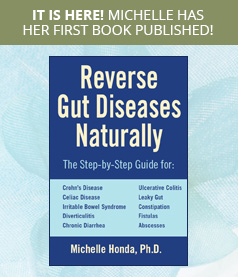

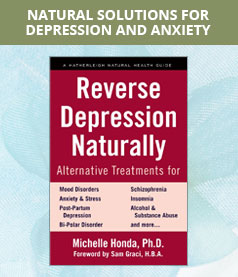
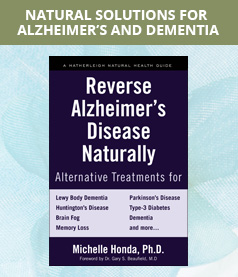
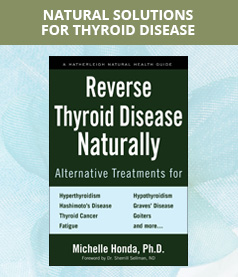

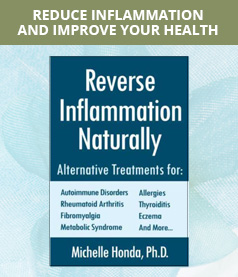
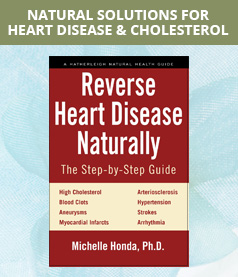
Follow Us!